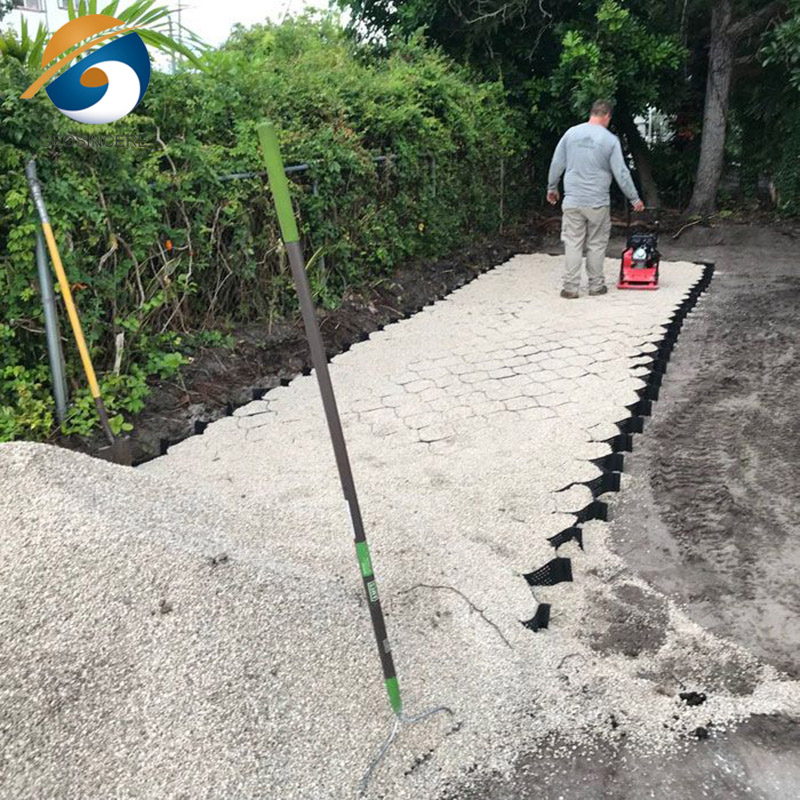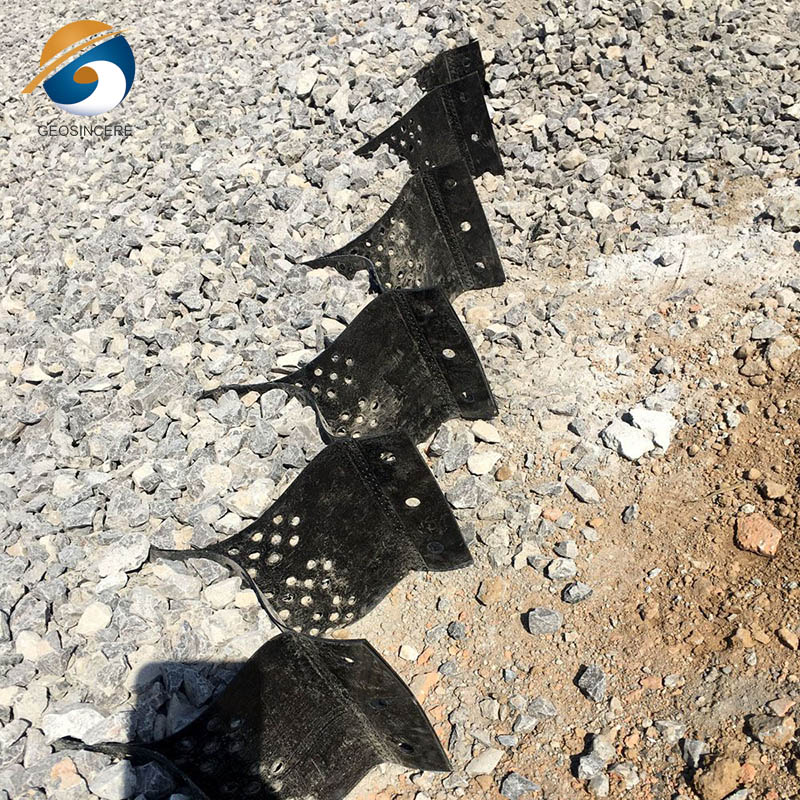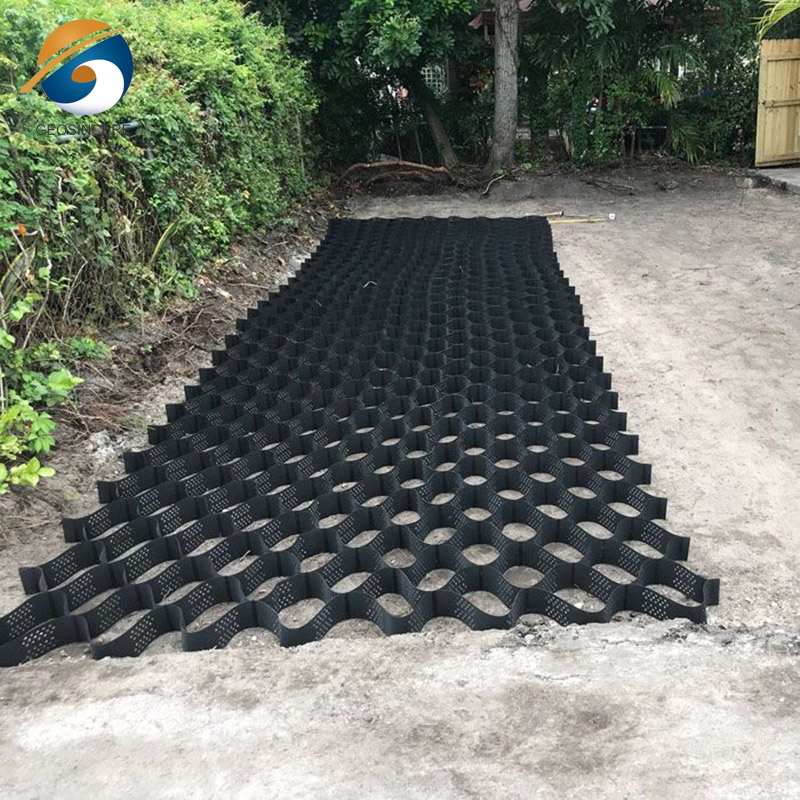What Is HDPE Geocell?
HDPE geocell refers to a geosynthetic product made from high-density polyethylene (HDPE). Geocells are three-dimensional cellular structures with interconnected cells that are filled with soil, aggregate, or other materials.HDPE geocells are manufactured by welding or bonding individual strips or sheets of HDPE together to form a honeycomb-like structure. The resulting geocell has a flexible and lightweight design that can be easily transported and installed on-site. The cells of the geocell can be expanded or stretched to form a network when filled with the desired material.They are commonly used in civil engineering and construction applications for soil stabilization, erosion control, load support, and slope protection.
HDPE geocells offer numerous advantages in geotechnical engineering projects. They improve soil stability, increase load-bearing capacity, reduce soil erosion, and provide environmental benefits. These characteristics make them a popular choice in various infrastructure and construction projects around the world.
This article takes you through a comprehensive understanding of HDPE geocell.
1.What is Geocell?
Geocell is a geosynthetic product used in civil engineering and construction applications for soil stabilization, erosion control, load support, and slope protection. It is a three-dimensional cellular structure made from various materials such as high-density polyethylene (HDPE), polypropylene (PP), or polyester.
Geocells are designed with interconnected cells that are often arranged in a honeycomb pattern. These cells can be expanded or stretched to create a network of chambers. When the geocell is filled with soil, aggregate, or other materials, it forms a stable structure that provides reinforcement and containment.
The process typically involves placing the geocell on the ground or slopes in the desired location. The geocell is then filled with the selected material, such as compacted soil or aggregate. As the cells are filled, they confine the material within, preventing lateral movement and enhancing its load-bearing capacity.
The flexibility of geocells allows them to conform to the terrain and provide support on uneven surfaces. They can be customized to meet specific project requirements, including cell size, thickness, and material strength. This versatility makes geocells a popular choice in geotechnical engineering for enhancing the performance and longevity of infrastructure projects.
2. Why Use HDPE Material to Manufacture Geocell?
HDPE material is used to manufacture geocells because of its strength, durability, chemical resistance, flexibility, UV resistance, permeability, and lightweight nature. These properties make HDPE geocells capable of stabilizing and reinforcing soil, providing erosion control, accommodating ground movement, and withstanding heavy loads. HDPE is also recyclable, aligning with sustainable practices in construction projects.
2.1 What Is HDPE Materials ?
HDPE stands for High-Density Polyethylene. It is a versatile and widely used thermoplastic polymer that is made from petroleum. HDPE is known for its high strength-to-density ratio, excellent chemical resistance, and good impact resistance. It is commonly used in various industries for a wide range of applications.
2.2 Key Characteristics of HDPE Materials
HDPE is valued for its durability, chemical resistance, and versatility, which make it suitable for a wide range of applications across different industries.
1. High-density: HDPE has a high density, which gives it excellent strength and rigidity.
2. Chemical Resistance: HDPE is resistant to a wide range of chemicals, including acids, bases, and solvents.
3. Moisture Resistance: HDPE has low moisture absorption, making it resistant to water and moisture-related degradation.
4. Impact Resistance: HDPE has excellent impact resistance, making it resistant to cracking or breaking under stress.
5. Lightweight: Despite its high density, HDPE is relatively lightweight.
6. Recyclability: HDPE is highly recyclable. It can be melted and reprocessed into new products, reducing environmental impact and promoting sustainability.
3. What is The Role of HDPE Geocell in Different Applications?
HDPE geocells play a versatile role in providing soil stabilization, erosion control, load support, and retaining capabilities in various civil engineering applications. They contribute to enhancing the performance, longevity, and sustainability of infrastructure projects.Here are some of the key roles of HDPE geocells in different applications:

1. Soil Stabilization: HDPE geocells are used to stabilize soil by confining and reinforcing it. The three-dimensional cellular structure of geocells provides lateral restraint to the soil particles, preventing lateral spreading and enhancing load-bearing capacity. This is particularly useful in applications such as slope stabilization, embankment construction, and retaining walls.
2. Erosion Control: Geocells are effective in erosion control applications. They can be used to create vegetated or non-vegetated erosion control systems. When filled with soil and seeded, geocells provide a stable surface that prevents soil erosion and promotes vegetation growth. They are commonly used in channels, riverbanks, shorelines, and steep slopes to mitigate erosion and maintain the stability of the soil.
3. Load Support: HDPE geocells are used to create load-bearing platforms. By distributing the load over a larger area, geocells provide enhanced support and stability. This is beneficial in applications such as road and railway construction, parking lots, and heavy equipment platforms.
4. Retaining Walls: Geocells can be used to construct gravity retaining walls. When filled with suitable backfill material, geocells create a reinforced structure that can retain soil and withstand lateral pressure. This is commonly employed in applications such as earth retaining walls, noise barriers, and landscaping structures.
5.Subgrade Stabilization: Geocells are used for subgrade stabilization in road and pavement construction. By confining and reinforcing the subgrade soil, geocells improve its load-bearing capacity, reduce settlement, and enhance the overall performance and durability of the pavement structure.
4. Conclusion:
HDPE geocell, or high-density polyethylene geocell, is a cellular confinement system used in geotechnical engineering. It consists of interconnected polymeric cells that are filled with soil or other materials. It provides increased stability and load-bearing capacity to constructed structures such as roads, embankments, and retaining walls. HDPE geocells provide a cost-effective and sustainable solution for geotechnical engineering projects, offering increased stability and longevity to the constructed structures.















